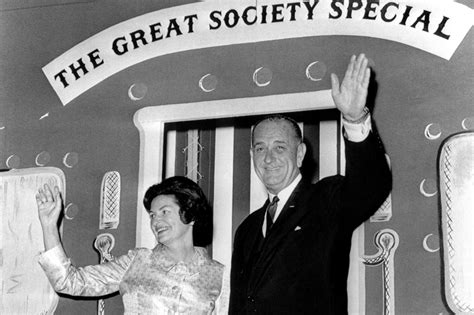Introduction
In the wake of President John F. Kennedy’s assassination in 1963, Vice President Lyndon B. Johnson took office with a bold vision for America. He proposed a series of ambitious social welfare programs aimed at eliminating poverty, improving education, and providing healthcare for all Americans. This ambitious agenda became known as the Great Society.

The Pillars of the Great Society
The Great Society was built on four main pillars:
- Education: Expand access to quality education for all Americans, from preschool to college.
- Health Care: Provide affordable, quality healthcare for all citizens, regardless of income or background.
- Poverty Reduction: Eradicate poverty through job creation, job training, and economic opportunity.
- Civil Rights: Protect the civil rights of all Americans, regardless of race, religion, or gender.
Education Initiatives
The Great Society’s education initiatives focused on improving the quality of education at all levels. Key programs included:
- Head Start: A preschool program for children from low-income families.
- Elementary and Secondary Education Act (ESEA): Provided federal funding to improve school facilities and curriculum.
- Higher Education Act: Expanded access to college loans and grants.
Healthcare Initiatives
The Great Society’s healthcare initiatives aimed to provide affordable, quality healthcare for all Americans. Key programs included:
- Medicare: A health insurance program for the elderly and disabled.
- Medicaid: A health insurance program for low-income Americans.
- Community Health Centers: Provided affordable healthcare services in underserved communities.
Poverty Reduction Initiatives
The Great Society’s poverty reduction initiatives aimed to create economic opportunity and reduce unemployment. Key programs included:
- Job Corps: A job training program for low-income youth.
- Neighborhood Youth Corps: A youth employment program.
- Head Start: A preschool program for children from low-income families.
Civil Rights Initiatives
The Great Society’s civil rights initiatives aimed to protect the rights of all Americans, regardless of race, religion, or gender. Key programs included:
- Civil Rights Act of 1964: Prohibited discrimination in employment, public accommodations, and voting.
- Voting Rights Act of 1965: Protected the voting rights of African Americans.
- Fair Housing Act of 1968: Prohibited discrimination in housing.
Impact of the Great Society
The Great Society had a significant impact on American society. Key achievements included:
- Expanding access to quality education: The number of college graduates increased significantly during the 1960s.
- Improving healthcare for millions of Americans: Medicare and Medicaid provided health insurance to millions of low-income Americans.
- Reducing poverty: The poverty rate fell from 19% in 1964 to 11% in 1973.
- Protecting civil rights: The Civil Rights Act and Voting Rights Act ended legal discrimination and protected the rights of minorities.
However, the Great Society also faced challenges. Key criticisms included:
- Cost: The Great Society’s programs were expensive, and the government faced budget deficits and inflation.
- Political opposition: The Great Society’s liberal policies faced opposition from conservatives in Congress.
- Resistance to change: Some programs, such as busing for school desegregation, faced resistance from local communities.
Legacy of the Great Society
The Great Society is a complex and controversial chapter in American history. While it achieved significant social progress, it also faced challenges and criticism. Nonetheless, the Great Society’s legacy is one of ambition, idealism, and a commitment to improving the lives of all Americans.
Conclusion
The Great Society was a bold social welfare program that aimed to create a more just and equitable society for all Americans. While it faced challenges and criticism, the Great Society’s legacy is one of significant social progress and a commitment to improving the lives of all Americans.
Additional Insights
- The Great Society was the largest expansion of the federal government’s role in domestic policy since the New Deal.
- The Great Society’s programs were funded by tax increases and deficit spending.
- The Great Society was supported by a broad coalition of liberals, labor unions, and civil rights groups.
- The Great Society was opposed by conservatives, who argued that it was too expensive and would expand the role of government too much.
Tables
| Program | Purpose | Funding (billions) |
|---|---|---|
| Head Start | Preschool program for low-income families | $5.5 |
| Elementary and Secondary Education Act | Improve school facilities and curriculum | $2.5 |
| Higher Education Act | Expand access to college loans and grants | $1.5 |
| Medicare | Health insurance for the elderly and disabled | $10.0 |
| Medicaid | Health insurance for low-income Americans | $6.0 |
| Community Health Centers | Provide affordable healthcare services in underserved communities | $3.5 |
| Job Corps | Job training program for low-income youth | $2.0 |
| Neighborhood Youth Corps | Youth employment program | $1.5 |
| Civil Rights Act of 1964 | Prohibited discrimination in employment, public accommodations, and voting | $0 |
| Voting Rights Act of 1965 | Protected the voting rights of African Americans | $0 |
| Fair Housing Act of 1968 | Prohibited discrimination in housing | $0 |
